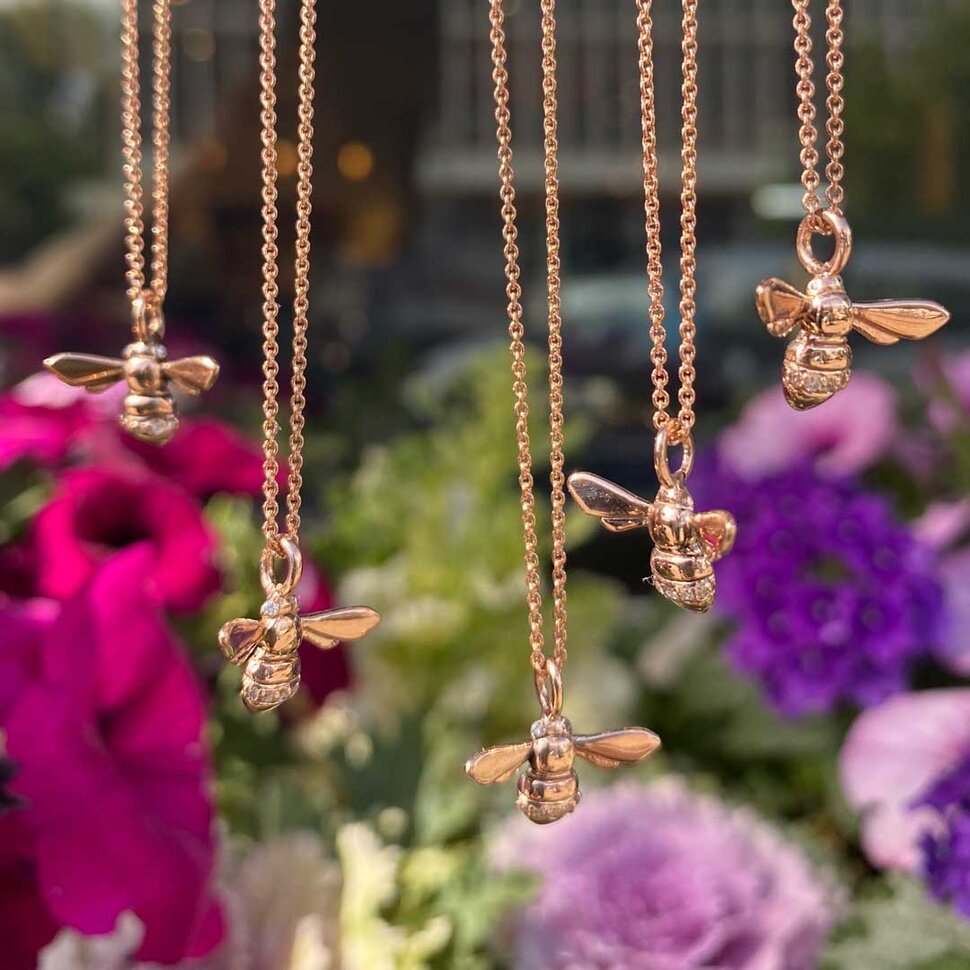We love bees!

Flutter into style with our newest buzz-worthy revelation: five dazzling rose gold bee necklaces, straight from the creative hive of Carol, E79's owner!
Crafted in 14k rose gold, these necklaces feature dazzling diamond eyes that add a touch of sparkle to any outfit. These babies were originally whipped up for The Broadmoor in Colorado Springs. They're not just any old necklaces – they're our signature pieces, dripping with charm and style.
We're dropping a limited batch of five necklaces just for you, but you gotta act fast because they'll be gone in a flash! So, grab one while you can and let's add some buzz to your jewelry game!
Read more about bees below.
*************
BUZZING WITH LIFE!
The importance of Bees in Pollination
In the delicate dance of nature, few creatures play a role as vital as the humble bee. With their fuzzy bodies and industrious wings, bees serve as nature’s most efficient pollinators, ensuring the reproduction of countless plant species upon which much of Earth’s biodiversity and human agriculture depend.
The Pollination Process
As bees flit from flower to flower, collecting nectar to sustain their colonies, they unwittingly transfer pollen grains between the male and female reproductive organs of plants. This transfer is essential for fertilization, enabling the production of seeds and fruits. In fact, it’s estimated that approximately 75% of all flowering plants rely on animal pollinators like bees to reproduce.
Quick Facts About Bees
- There are over 20,000 known species of bees worldwide.
- Bees can see ultraviolet light, helping them navigate and locate flowers.
- A single bee colony can pollinate millions of flowers each day.
- Honeybees communicate through intricate dances to share information about food sources.
- Some bees, like bumblebees, can regulate their body temperature, allowing them to fly in cooler weather.
- Bees produce not only honey but also beeswax, propolis, and royal jelly, all of which have various uses.
- The decline of bee populations poses a significant threat to global food production and ecosystem stability.
Honey Bee Myths & Folktales
Honey bees have captivated humans for millennia, with their behavior inspiring myths and folktales across various cultures.
- Greek mythology portrays bees and honey as significant elements, with stories like the birth of Zeus involving the assistance of bees.
- In Egyptian mythology, honey bees symbolize life, death, and resurrection, believed to carry messages from the gods and guide the dead to the afterlife.
- Celtic mythology attributes immense wisdom to honey bees, believing they travel between worlds and embody ancient knowledge.
- African bushmen myths credit bees with a vital role in human creation, showcasing their benevolent nature.
- Bees have been associated with magic and witchcraft, with tales of witches using bees as familiars or causing harm while taking their form.
- Honey bee superstitions include beliefs about visitors arriving if a bee enters the house and receiving money if a bee lands on one's hand.
- Despite scientific understanding, the mystique of honey bees persists, with cultures worldwide contributing to a rich tapestry of myths and folktales surrounding these remarkable creatures.



